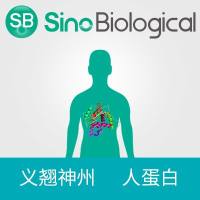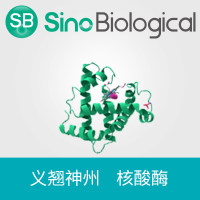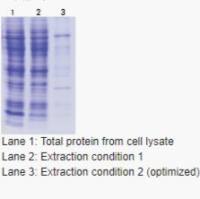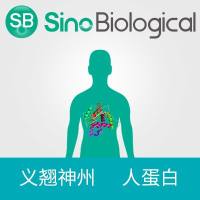北京义翘神州科技股份有限公司(Sino Biological Inc.)品牌商
16 年
手机商铺
商家活跃:
产品热度:
- NaN
- 0
- 0
- 2
- 2
品牌商
北京义翘神州科技股份有限公司(Sino Biological Inc.)
入驻年限:16 年
- 联系人:
客服部
- 所在地区:
北京
- 业务范围:
技术服务、试剂、抗体、细胞库 / 细胞培养、ELISA 试剂盒
- 经营模式:
生产厂商
推荐产品

Complement component 3重组蛋白|Recombinant Mouse Complement component 3 Protein (His Tag)
品牌:Sino Biological
¥4520 - 29350
咨询公司新闻/正文
神经系统疾病研究的新兴工具:脑类器官
422 人阅读发布时间:2023-07-28 17:02
前 言
大脑复杂的细胞组成和特定的结构,使得体外建模难度极大。近年来大脑类器官概括了大脑发育的许多关键特征,激发全球神经学领域相关科研人员的兴趣,研究成果不断的发表于高分期刊,将脑类器官用于各种生理和病理研究。细胞因子作为类器官培养基中的添加试剂,可以引导细胞按特定器官谱系进行分化。为助力脑类器官的培养与分化,义翘神州可提供人EGF、FGF2、NOG、BMP4等一系列脑类器官培养相关产品。
01 脑类器官研究新进展
目前大多数脑部模型主要是人类死后脑组织、非人灵长类动物组织或者体外2D细胞。由于资源限制和动物模型的物种差异性等原因,使脑类器官成为潜在研究脑部生理和病理的模型。脑类器官主要源自胚胎干细胞(ESC)或者诱导性多能干细胞(iPSC)。对于体外神经生物学和神经发育障碍的疾病的研究,也会用到不同部位的脑类器官,比如前脑、中脑、海马脑类器官等。目前使用脑类器官模型涉及到阿尔茨海默症、帕金森病、自闭症、精神分裂等,甚至包括渐冻症、结节性硬化症等罕见病。
体外神经生物学和神经发育障碍疾病模型的脑类器官
| Type of organoid | Disease modeled/potential application |
|---|---|
| Cerebral/early brain organoids |
Genetically caused microcephaly Zika virus mediated microcephaly Miller–Dieker syndrome |
| Midbrain organoids | Potential to model Parkinson's disease |
| Hypothalamus organoids | Potential to model hormonal and metabolic disorders including Prader–Willi syndrome |
| Adenohypophysis organoids | Potential to model pituitary dysfunction |
| Hippocampus organoids | Potential to model cognitive dysfunctions due to Alzheimer's disease |
| Cerebellum organoids | Potential to model SCA and Dandy–Walker syndrome |
| Dorsaltelencephalon organoids | ASD |
| Forebrain assembloids | Timothy syndrome |
ASD, autism spectrum disorders; POMC, pro-opiomelanocortin.
(源自:https://doi.org/10.1002/bies.201900011)
02 细胞因子在脑类器官中的应用
细胞因子在类器官培养过程中发挥重要作用。在多能干细胞(PSC)培养中加入了FGF2构建3D脑类器官模型。对于不同部位的脑类器官的培养,会加入不同的细胞因子,比如对于用于研究脊髓小脑共济失调疾病的小脑类器官培养中,会加入FGF2、FGF19、SDF1等细胞因子。
用于生成特异性脑类器官的因子摘要
BDNF, brain-derived neurotrophic factor; BMP, bone morphogenetic protein; cAMP, cyclic adenosine monophosphate; EGF, epidermal growth factor; FBS, fetal bovine serum; FGF, fibroblast growth factor; GDNF, glial cell‐derived neurotrophic factor.
| Type of organoid | Wnt activators and SMAD inhibitors |
|---|---|
| Midbrain organoids | Inhibitors that blocks TGF‐β pathways BMP-4 ligand and Wnt agonists |
| Adenohypophysis organoids | DAPT, SAG, BIO, BMP4, dorsomorphin, Wnt4, Wnt5, FGF8, Nodal, iWP2 |
| Hippocampus organoids | Wnt inhibitor IWR1e, TGF‐β inhibitor SB431542, 10% FBS, GSK3 inhibitor CHIR99021, BMP4 |
| Cerebellum organoids | SB431542, FGF2, FGF19, SDF1 |
| Dorsaltelencephalon organoids | Noggin, FGF2, rhDKK1, EGF, ascorbic acid, BDNF, GDNF, cAMP |
| Dorsaltelencephalon organoids | Dorsomorphin, SB431542, FGF2, EGF Subpallium: IWP2, SHH agonist SAG, BDNF, NT3, allopregnalone, retinoic acid Pallium: BDNF, NT3 |
| Photosensitive organoids | BDNF |
| Retinal organoids | IWR1e, Matrigel, 10% FBS, SAG, CHIR99021, retinoic acid |
| Hypothalamus organoids | SMAD, BMP, Nodal and activin signaling pathway inhibitors |
| Cerebellar plate neuroepithelium | FGF2,4,8, SAG, retinoic acid, BDNF, GDNF, NT3 |
(源自:https://doi.org/10.1002/bies.201900011)
✦义翘神州细胞因子产品数据
Human FGF2 Protein, Cat: GMP-10014-HNAE
高纯度:
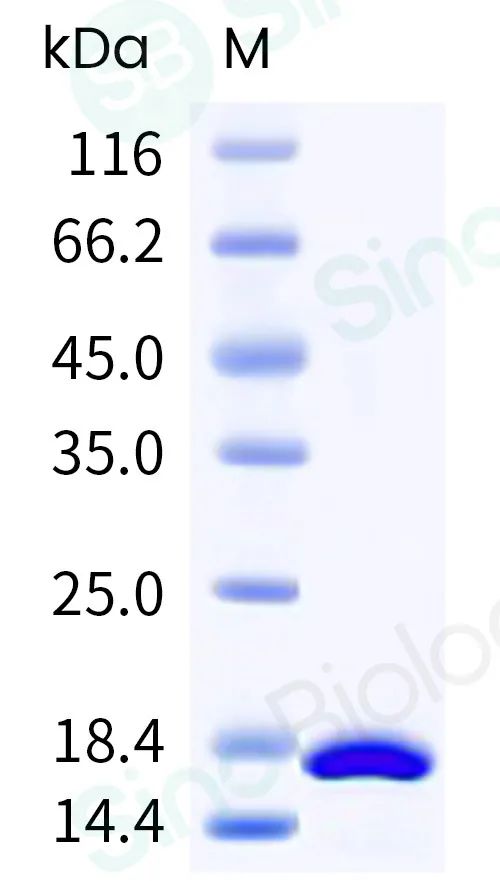
≥ 95 % as determined by SDS-PAGE.
结合活性:
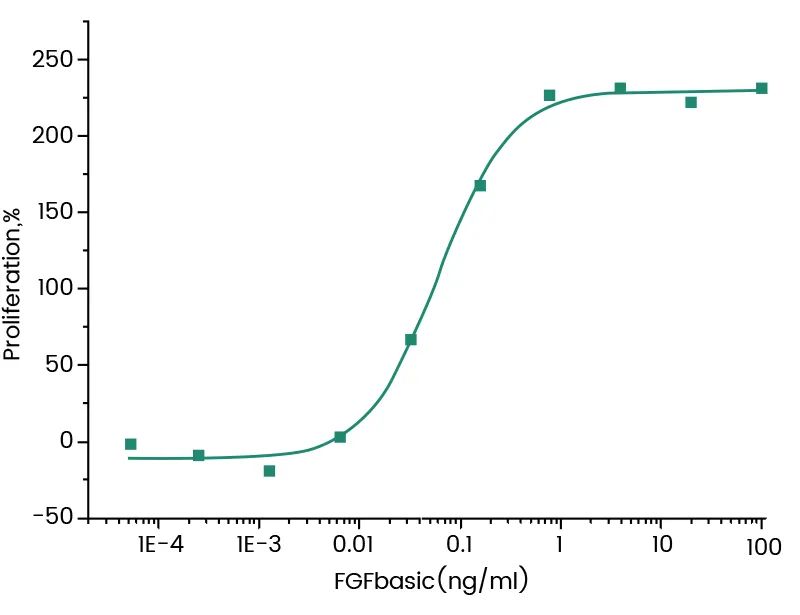
Cell proliferation assay using Balb/C 3T3 mouse embryonic fibroblasts. The specific activity is >1,000 IU/μg.
Human Noggin Protein, Cat: 10267-HNAH
高纯度:

≥95% as determined by SDS-PAGE. ≥95% as determined by SEC-HPLC.
高批间一致性:
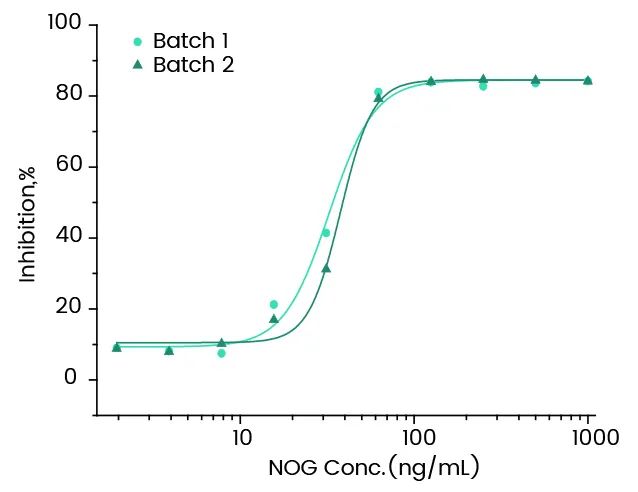
Inhibit BMP4-induced alkaline phosphatase production by MC3T3E1 mouse preosteoblast cells.
脑类器官培养相关的细胞因子
| 货号 | 靶点 | 内毒素 | 纯度及活性 |
|---|---|---|---|
| 10605-HNAE | EGF | <5 EU/mg | ≥95%☆,Active |
| GMP-10605-HNAE | EGF | <5 EU/mg | ≥95%☆,Active |
| GMP-10014-HNAE | FGF2 | <10 EU/mg | ≥95%,Active |
| 10609-HNAE2 | BMP4 | <1 EU/mg | ≥95%☆,Active |
| 10267-HNAH | NOG | <10 EU/mg | ≥95%☆,Active |
【参考文献】
1. Antoine Verger et al. FDA Approval of Lecanemab: The Real Start of Widespread Amyloid PET Use? — The EANM Neuroimaging Committee Perspective. European Journal of Nuclear Medicine and Molecular Imaging, 2023. https://doi.org/10.1007/s00259-023-06177-5.2. Yujung Chang et al. Modelling Neurodegenerative Diseases with 3D Brain Organoids. Biological Reviews, 2020. https://doi.org/10.1111/brv.12626.
3. Jihoon Kim, Bon-Kyoung Koo, and Juergen A. Knoblich, Human Organoids: Model Systems for Human Biology and Medicine, Nature Reviews Molecular Cell Biology, 2020. https://doi.org/10.1038/s41580-020-0259-3.
4. Guini Song et al. The Application of Brain Organoid Technology in Stroke Research: Challenges and Prospects. Frontiers in Cellular Neuroscience, 2021. https://www.frontiersin.org/articles/10.3389/fncel.2021.646921.
5. Jay Gopalakrishnan. The Emergence of Stem Cell-Based Brain Organoids: Trends and Challenges. BioEssays, 2019. https://doi.org/10.1002/bies.201900011.
6. Madeline A. Lancaster and Juergen A. Knoblich. Generation of Cerebral Organoids from Human Pluripotent Stem Cells. Nature Protocols, 2014. https://doi.org/10.1038/nprot.2014.158.
7. Sebastian, R., et al. Schizophrenia-associated NRXN1 deletions induce developmental-timing- and cell-type-specific vulnerabilities in human brain organoids. Nat Commun, 2023. https://doi.org/10.1038/s41467-023-39420-6
8. Jimena Andersen, et al. Generation of Functional Human 3D Cortico-Motor Assembloids. Cell, 2020, doi:10.1016/j.cell.2020.11.017.
9. Yueqi Wang, et al. Modeling human telencephalic development and autism-associated SHANK3 deficiency using organoids generated from single neural rosettes. Nature Communications, 2022. https://doi.org/10.1038/s41467-022-33364-z
10. Fleck, J.S., et al. Inferring and perturbing cell fate regulomes in human brain organoids. Nature, 2022. https://doi.org/10.1038/s41586-022-05279-8
11. Oliver L. Eichmüller, et al. Amplification of human interneuron progenitors promotes brain tumors and neurological defects. Science, 2022. Doi: 10.1126/science.abf5546


